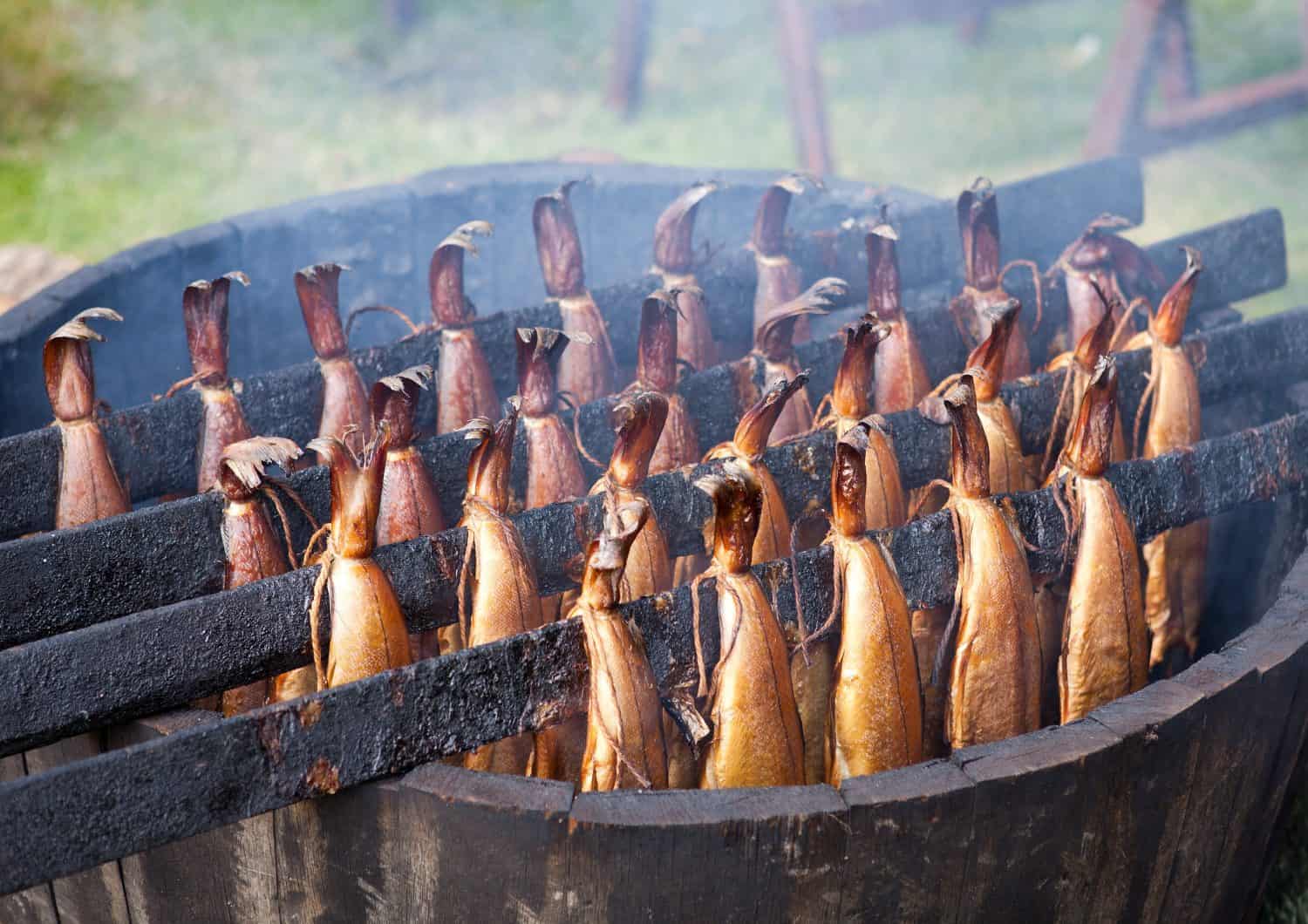People tend to either love or hate seafood. Some people can’t get enough of it, while others hate the briney, ocean-like taste. Additionally, new foods can be intimidating, especially in a restaurant where ordering something you don’t like can be a massive waste of money. Eating fish and other sea creatures can be divisive, even if you don’t eat anything particularly atypical for your culture. However, seafood is an excellent source of nutrients.
It’s high in protein, low in calories, a good source of vitamin D, and packed to the gills with omega-3 fatty acids, which are important for heart health. Additionally, saltwater fish have a high concentration of iodine, which is essential for your thyroid function and metabolic health. However, even among the most adventurous of eaters, some seafood delicacies can cause a double-take. Let’s examine some delicious ethnic seafood delicacies that you should definitely try at least one bite of.
When choosing the population for this list, we picked dishes that satisfied one or both of two major criteria. The first criterion the dishes we picked could meet is that they could be associated with a specific ethnic culture. Now, this could be any distinct ethnic culture, including more specific white cultures, such as Scottish culture. Alternatively, the specific fish could be simply less commonly eaten and not as well known, even if the fish itself is not associated with a specific culture. There are a handful of lesser-known seafood delicacies that are taking the world by storm due to the fish in question being an invasive species. In these cases, eating this fish may not be associated with any specific culture. However, where these fish have become problematic for the ecosystem, you may find unique dishes using its meat. (Here’s a look at classic American seafood dishes and where they originated.)
Uni (Sea Urchin)

Of the whole sea urchin creature, there is only one part of it that is edible. The Japanese delicacy, uni, is often mislabeled in English as “sea urchin roe.” However, uni isn’t the sea urchin’s eggs, it’s the reproductive organs of a mature sea urchin. In Japan, it’s usually served as a type of sushi and is often eaten raw. However, it can be served in a multitude of dishes, such as in a pasta sauce. Eating sea urchins is mostly associated with Japanese culture, but it’s also a prevalent dish in Chile and the Mediterranean where they have unique sea urchin-based dishes as well. Thus, we recommend that aspiring sea urchin eaters make an effort to try as many different cultures’ dishes as possible.
People who have eaten sea urchin describe the taste as rich and creamy and say that it has the texture of a high-quality pâté. Others say that it’s salty with a slight taste evocative of the ocean, much like other high-quality seafood. This is an expensive cut of seafood. However, if you decide to try and make it yourself and find a dealer to buy it from, look for cuts that are bright in color and firm without a distinctly fishy smell.
Part of the high price of sea urchins comes from the fact that they are never farmed. Any sea urchin you buy, whether from a restaurant or a fish market, is hand-collected by divers, which drives up the price since the labor is much more specialized. Due to the overfishing of sea urchins in Japan, most of the sea urchin meat on the market now comes from the United States. So, don’t be alarmed if you can’t find native Japanese sea urchins at your local fish market.
San-nakji
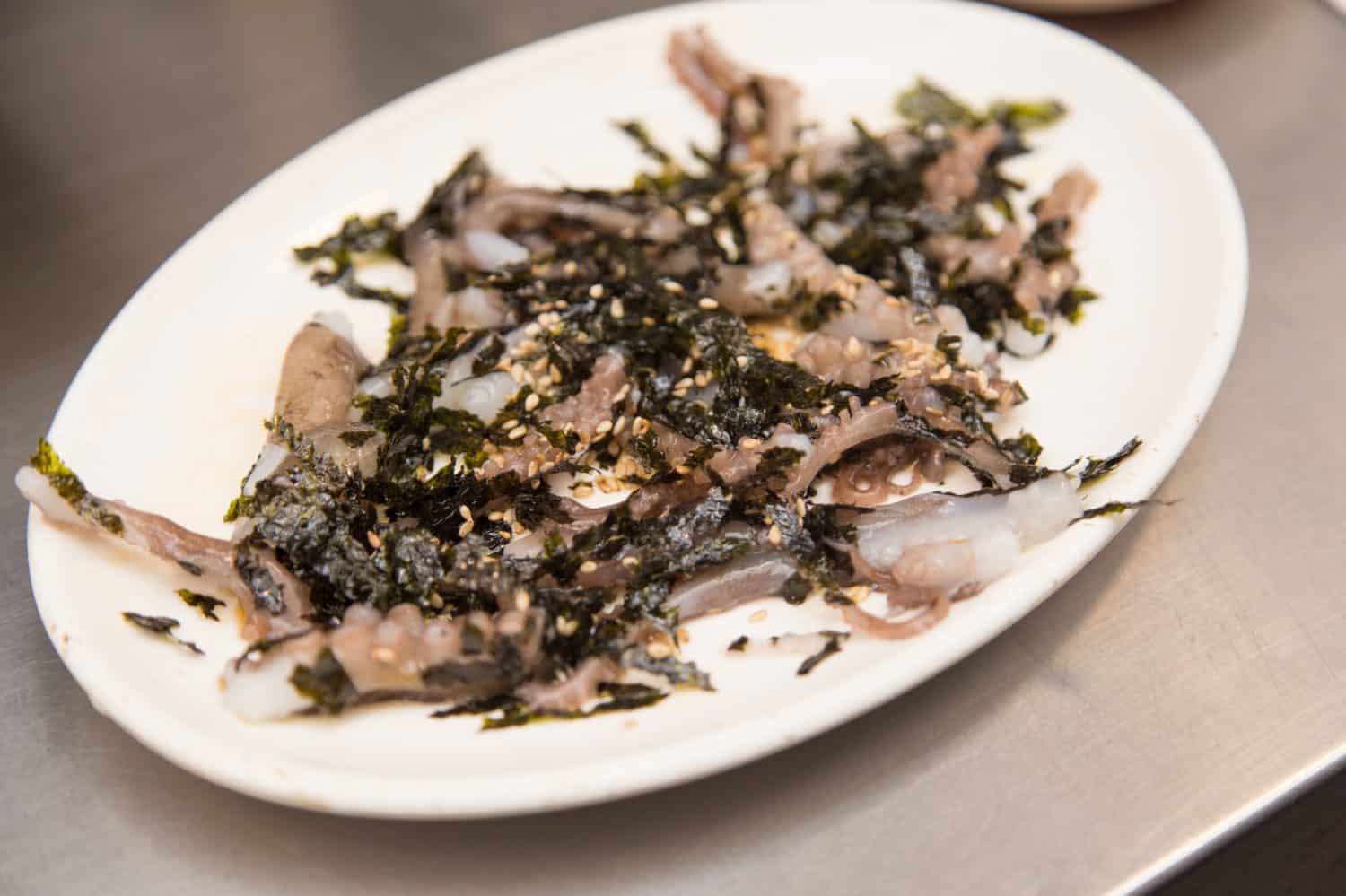
We’ve covered san-nakji in a previous article about foods that can be dangerous to eat. The danger of this dish is that it involves eating an octopus that is still, in some capacity, alive. You see, octopodes have a decentralized nervous system. Humans have a centralized nervous system; all of our neurons are centered in one part of our body: the brain. That means when you cut the nervous system from the brain, the whole person dies. However, an animal with a decentralized nervous system has neurons throughout its body and doesn’t die right away when the nervous system is sectioned. So, when the octopus is butchered, its now-separated parts stay alive for a period.
Since the octopus parts are still alive, they can still move and they do move both on the plate and in your mouth. This movement can result in the tentacles grabbing the sides of your throat when you go to swallow them, and you can choke on them. Around six people die yearly choking while eating san-nakji. However, if you’re brave enough to try it, san-nakji is a decorated part of Korean culture. They’ve been eating this dish for centuries and you can find it everywhere from food stalls to high-end restaurants in Korea.
As you can probably guess, san-nakji is also the subject of hot debate among animal rights activists, who believe that eating the dish is immoral since the octopus is still alive and in pain during consumption. Additionally, since the animal is alive and in pain, it isn’t kosher. So, many Jewish foodies will have to abstain from this dish as well. It is very hard to find the dish in the Western hemisphere due to the relative rarity of fresh octopus and the surrounding controversy.
Lionfish
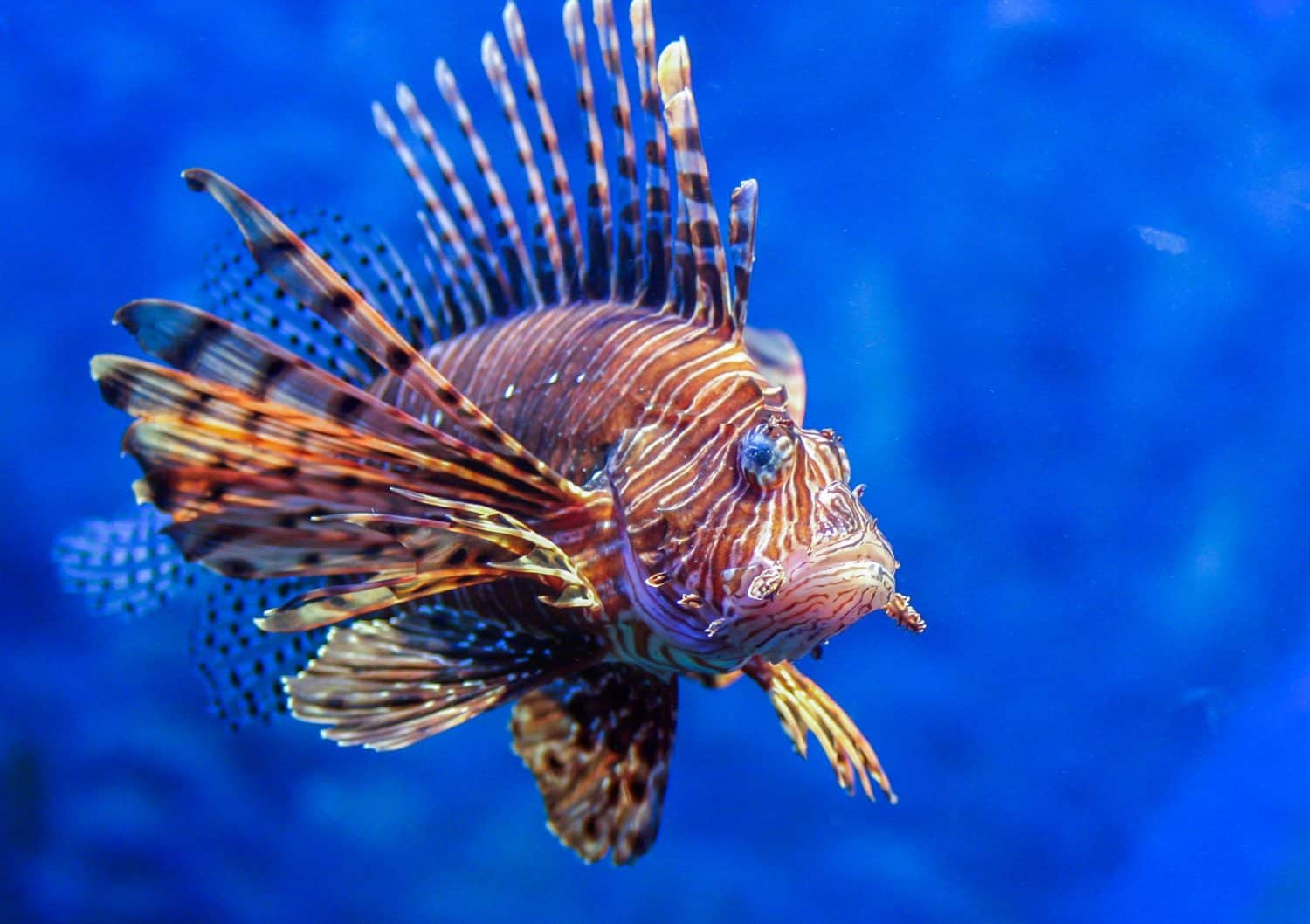
Lionfish isn’t just a delicious and healthy seafood delicacy but also ecologically beneficial to eat. The problem with lionfish is that they’re extremely invasive. We don’t know exactly how lionfish ended up in the Atlantic Ocean and surrounding areas. They’re native to the Indo-Pacific ocean areas. It’s thought that they were first introduced to the Atlantic and Caribbean through an unregulated aquarium release. Essentially, an aquarium, probably a pretty large one, may have released a large number of lionfish into the ocean. However, instead of dying out due to unfamiliar conditions, the lionfish more than thrived. They took over the coral reefs, eating or crowding out the native fish populations.
In the Caribbean, around 75% of coral reefs are in severe danger due to the presence of lionfish. Additionally, since adult lionfish rarely migrate, the population density of lionfish tends to not only be great but also grow exponentially over time. However, despite a lack of impetus to migrate, Atlantic currents are slowly moving lionfish northward. They’re popping up along the United States East Coast and have been found as far north as North Carolina. Unfortunately, they can’t be baited on a hook either. The only way to catch and kill lionfish is via spearfishing, which is a relatively specialized skill.
The good news is that lionfish are delicious. They do have venomous spines, but the flesh contains no toxins at all. So, don’t be afraid to eat a lionfish fillet if someone serves it to you. They’re also densely packed with omega-3 fatty acids, more so than other fish. Additionally, they’re lower in saturated fats and mercury. Finally, red lionfish and devil firefish, two different invasive species of lionfish, can’t be farmed. So, every time you buy lionfish, you’re supporting local fishermen who spearfish them by hand!
Arbroath Smokies
If you want to try Arbroath Smokies, the only place you can do that is Arbroath, Angus, Scotland. Under European laws, an Arbroath Smokie can only be called that if it was cooked within 5 miles of Arbroath’s town center and cooked using Arbroath’s traditional smoking methods. If either of those criteria are not met, it’s illegal to market the fish as an Arbroath Smokie. This dish is a type of salt-dried and smoked haddock that’s truly to die for. You can eat them cold or warm and you can use them in any recipe that calls for smoked fish.
Arbroath Smokies are first identified by a distinctive thumbprint behind the gills. Once the fish is properly identified as being adequate to be used in the smoking process, it’s gutted and auctioned at sea. Then, it’s brought to a local smokehouse in the center of Arbroath.
There the fish is headed and cleaned to be salted and smoked. After an overnight salting that cures the meat and toughens the skin for the high heat of the smoking process, they’re hung in pairs on a wooden stick to dry. The barrel used to be sunk into the ground, forming a pit, but in the modern day, the smokehouses use above-ground barrels constructed of bricks. The fire is stoked with hardwood, which is what gives Arbroath Smokies their distinctive flavor. Then, the sticks are laid over the barrel with the fish about 3 feet above the fire. The barrel lid is closed and covered with a hessian cloth to let the fire breathe.
The final product has a pronounced smoke aroma and a unique smokey flavor that is a bit salty and almost sweet. The flesh is cream-colored, moist, and flaky.
Garum
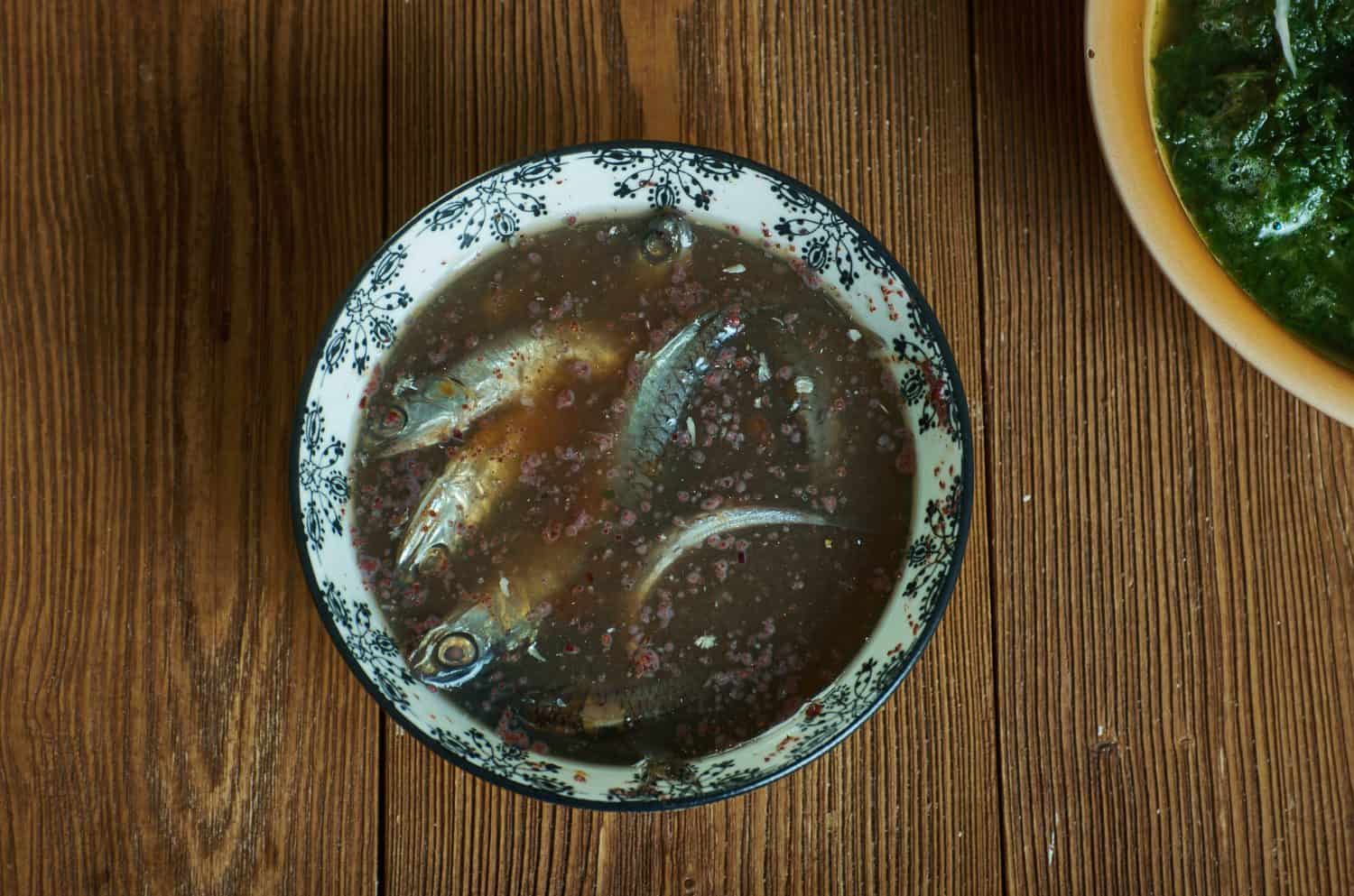
However, a jar of preserved garum was found and a chemical engineering team analyzed its contents to backward engineer the dish. They were able to chemically identify what was used in the preserved jar and discovered it was made of anchovies, salt, and herbs. They went down to their local pier and picked up some freshly caught anchovies. The team made a mixture of three parts fish to one part salt and herbs and allowed the mixture to ferment.
When small fish start to decay, their gut bacteria burst through their cell walls, initiating a process called autolysis. Essentially, the fish’s body digests itself, liquefying the muscle proteins and bones. The presence of salt slows the autolysis process, promoting the growth of lactic acid bacteria, which kills pathogens and foul-smelling toxins associated with decay. However, too much salt will prevent autolysis from occurring at all.
The resulting product is a paste made of dissolved fish bones and flesh, topped with an amber liquid that they reported smelling like “dried fish, seaweed, and spices.” This product has a huge amount of protein and is densely packed with glutamic acid, the same amino acid that gives Parmesan cheese, tamari sauce, and cooked mushrooms their unique umami flavor.
Jeotgal
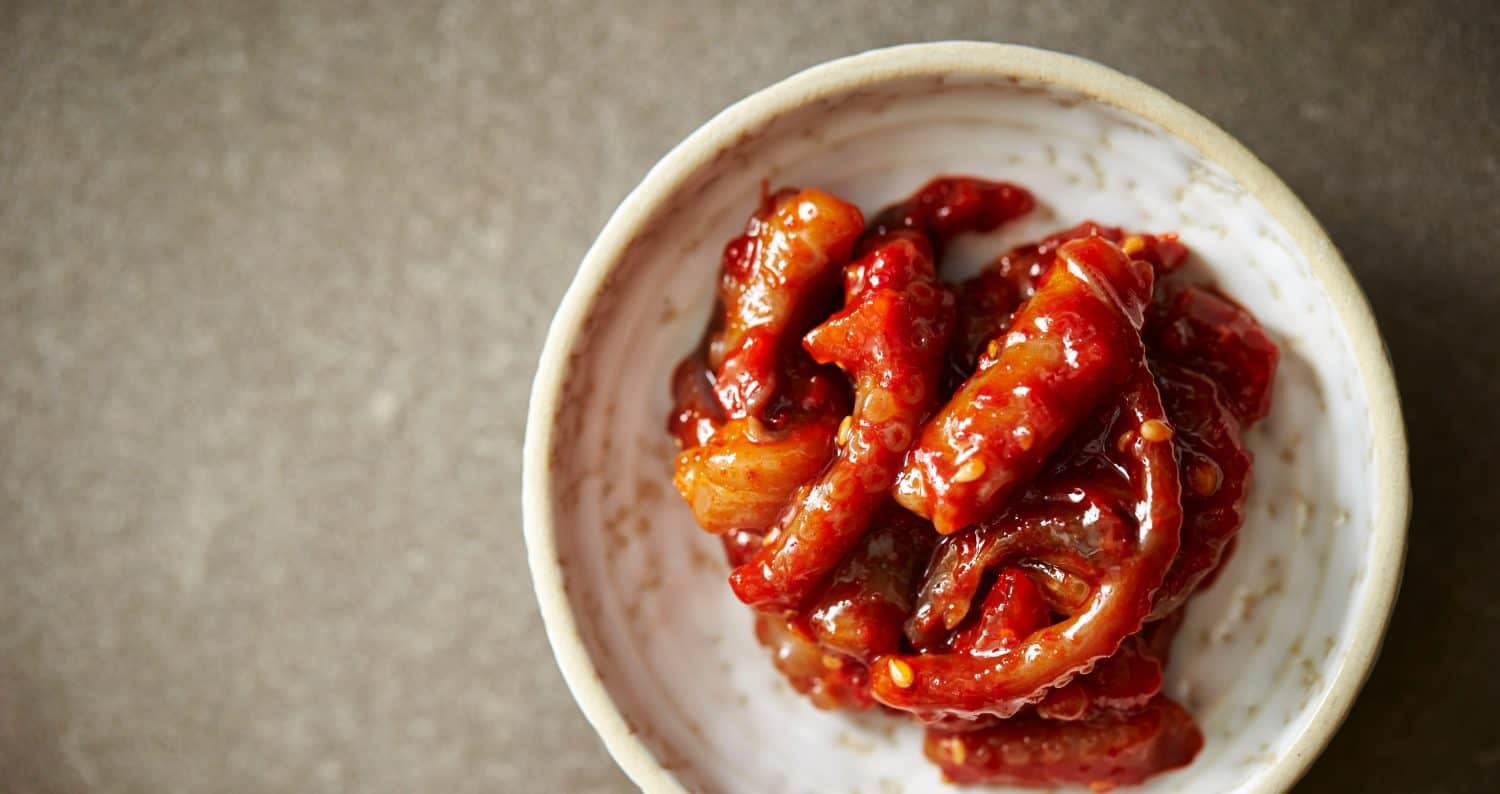
If you’ve ever had kimchi, you’ve had jeotgal, which is a staple seasoning in the dish. Jeotgal is made from fermented seafood and even a small amount of this dish will produce a strong flavor in any recipe. You can eat jeotgal on its own, use it as a seasoning, or even use it as a condiment. In many cases, it can be used as a substitute for salt to give a dish a more unique flavor. Jeotgal is a decorated part of Korean culture and you’ll find it in many cultural dishes.
Jeotgal originally evolved as a way to preserve fish and other seafood ingredients that would go bad due to the lack of refrigerated storage in the olden days. Fermentation preserves food items by using bacteria, yeast, and molds to break down the carbohydrates in a food item in the absence of oxygen. This creates acid or alcohol in the food, which preserves it and prevents harmful bacteria from growing in it. Ultimately, fermenting certain foods, like seafood, can allow a person to store the food for a long period without dangerous bacteria growing in it. This lets them gather or hunt for food that would traditionally go bad if not eaten right away and store it for later.
Due to the way non-harmful bacteria and other microorganisms play a role in fermentation, fermented food like jeotgal is loaded with probiotic organisms that promote digestive health. Jeotgal comes in many forms, made with tons of different ingredients. You can find jeotgal using squid, nakji (the same octopus found in san-nakji), pickled pollack innards, seed, and belt fish.
Conch
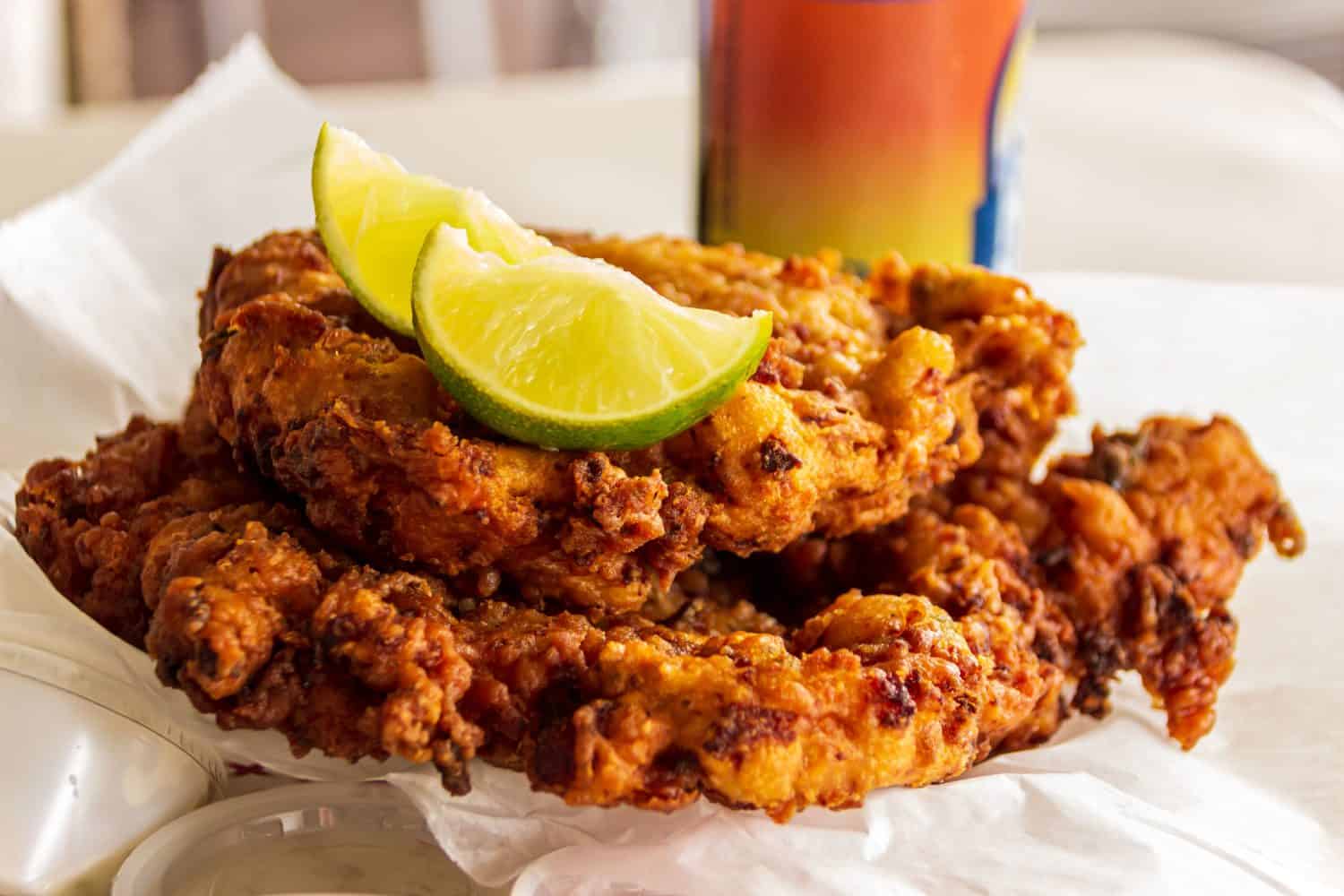
Most people are familiar with conch shells. These gorgeous shells are nearly synonymous with tropical beaches and their distinctive, elegant shape will make heads turn. However, the animal that once lived in that shell is a seafood delicacy eaten in the Bahamas. There, you can eat a variety of different conch-based dishes, such as grilled conch, conch fritters, cracked conch, conch chowder, and even conch salad. Conch-based dishes are a huge tourist attraction for the Bahamas and many people travel there intending to try this unique seafood dish.
Grilled conch is fairly straightforward. The meat is grilled with herbs and seasonings and served. Cracked conch uses tenderized conch meat that is breaded and fried. This dish is typically served with french fries at lunch but may be served with more traditional Bahamian sides, such as rice and peas, macaroni, or plantains. Conch chowder is made with vegetables, such as potatoes, onions, carrots, celery, conch meat, and various seasonings. Finally, if you happen to be in the Bahamas during the conch season, you should try conch fritters. These look a bit like bush puppies but are made with diced conch meat added to batter and deep-fried in hot oil until they’re golden brown.
Unfortunately, the popularity of conch meat in the Bahamas has led to overfishing. However, the Bahamian government has implemented a plan to slowly reverse the damage done without losing this unique dish. They’ve implemented a conch fishing season and measures to ensure that only mature conch are harvested. If you plan to travel to the Bahamas to try conch, ensure that you go during the conch fishing season.
Rova Caviar
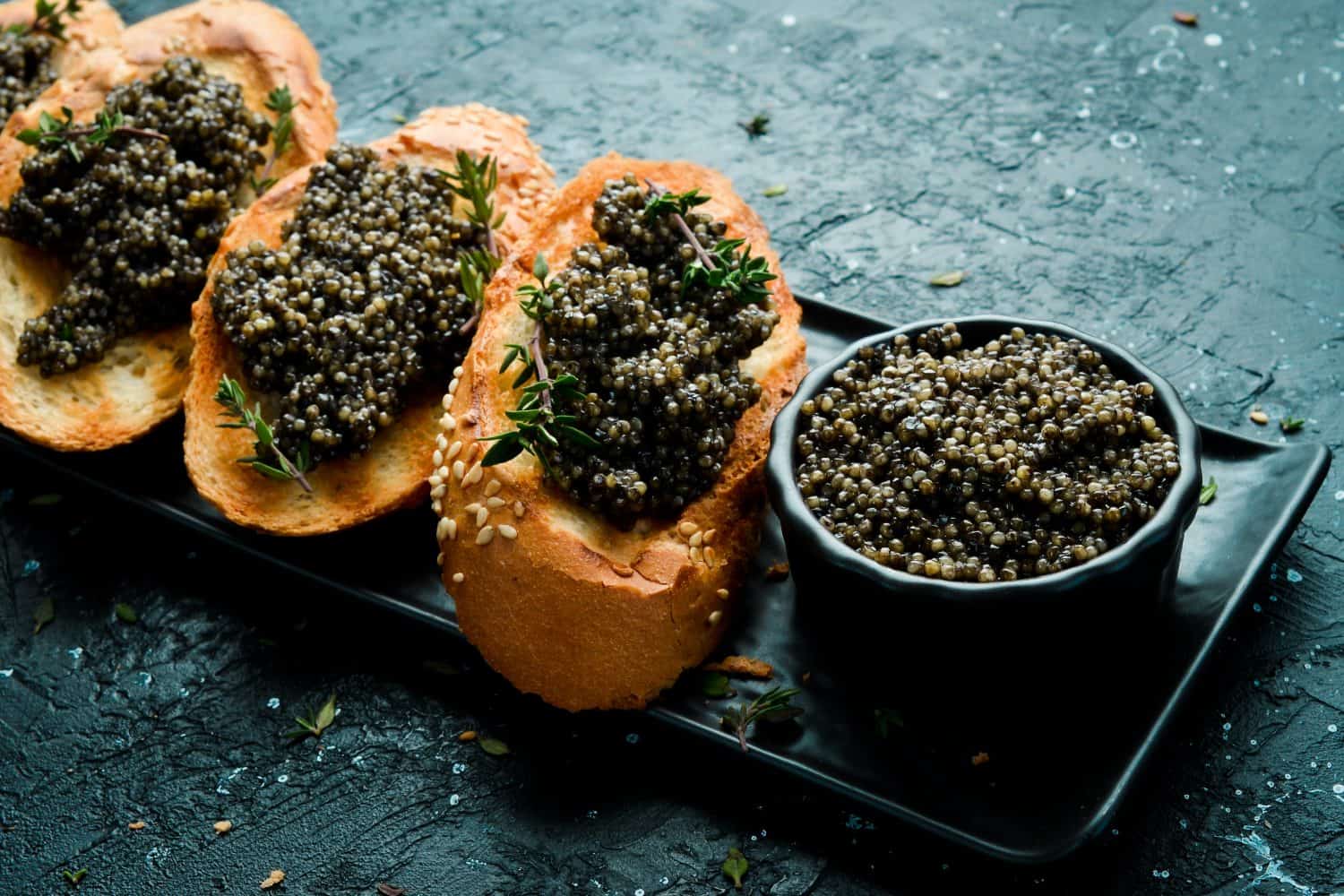
Caviar is a type of seafood made of sturgeon roe. Many different types of sturgeon are farmed for their unfertilized eggs. Rova Caviar is a small but unique player in the caviar industry that’s based in Madagascar. It is the only producer of caviar located in Africa. Rova is also the only producer of caviar from the Indian Ocean. At their farm, they employ rigorous techniques to ensure that their products are of the highest quality. They’re tested for color, taste, and smell during production. However, their success hinges on a single man’s dexterity.
Rova has one harvester who does the majority, if not all, of the sturgeon harvesting. He extracts the unfertilized eggs from the fishes’ innards by hand. Even a small mistake could ruin the harvest or harm the fish. However, he states that while he was initially nervous, he’s become so used to the process that it just comes naturally now and he no longer has to think deeply about it.
Despite being famous now, Rova’s caviar is a relative bargain. It goes for about $144 per 100 grams, which is significantly cheaper than other major caviar producers. They also produce a drop in the caviar bucket. The company produces about 1 ton a year out of the 340 tons produced yearly by the entire industry. However, their success hasn’t gone unnoticed. When they went to sell stock in their company a little while back, their stock sold out relatively quickly, disappearing from the market in just a few weeks.
Eel
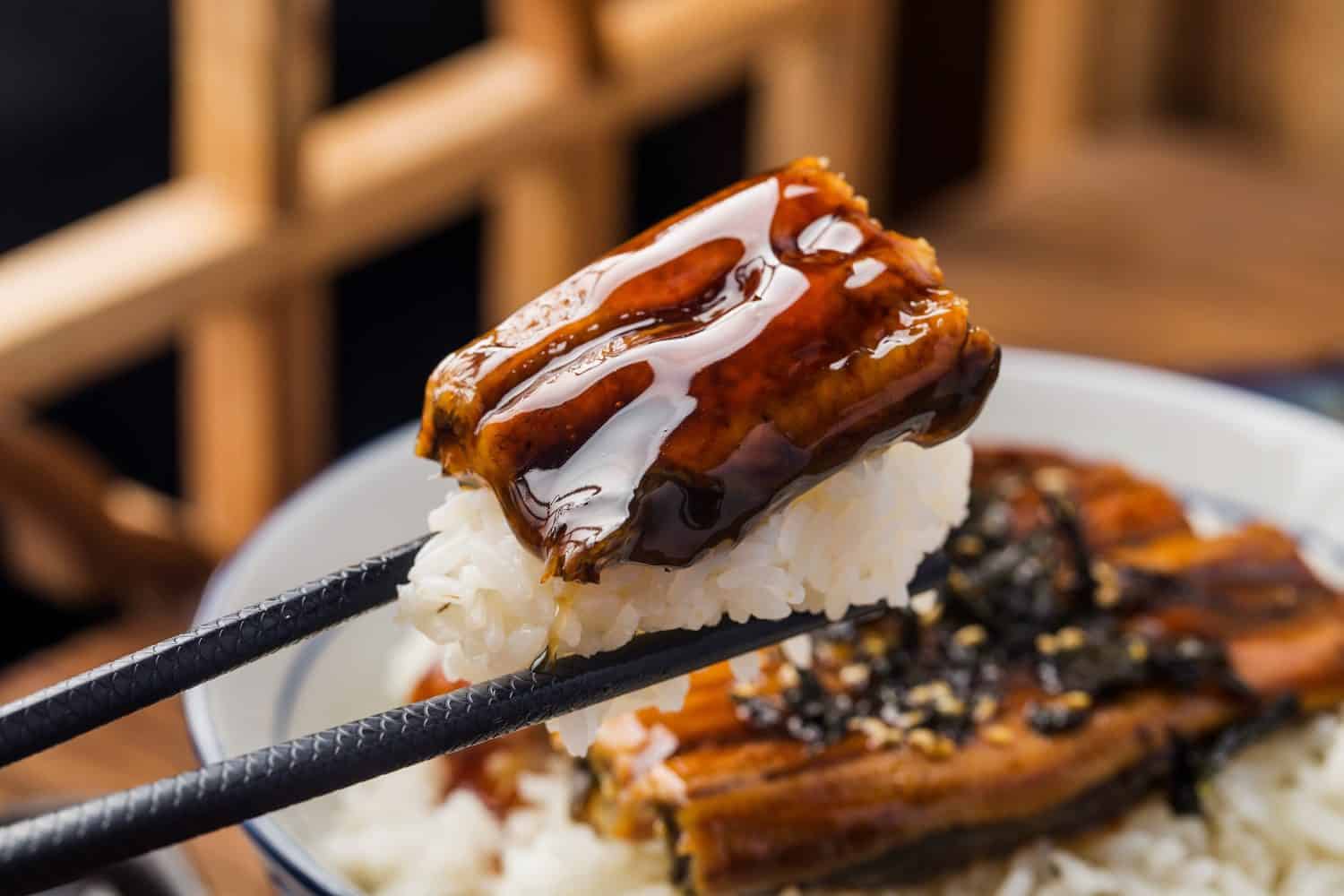
While the idea of eating a slimy, wriggling eel might make some people’s stomachs turn, people have been eating eels worldwide for centuries. While modern minds primarily associate eating eels with Japanese culture, jellied eels are a traditional British dish that incorporates these long fish. There are two types of eels, freshwater and saltwater, and you can eat both. However, freshwater eel is the most prevalent type of edible eel in the modern day. In Japan, there are two names for eel dishes depending on whether it’s made with freshwater (unagi) or saltwater (anago) eel. The most prominent producers of edible eel products in the world are Japan, China, Korea, and Taiwan.
Eel is typically eaten as sushi or grilled over rice. However, other cultures have dishes like jellied eels from Great Britain. If you’re worried about eating raw fish, worry not. Eel can’t be eaten raw because their raw meat is toxic to humans. The toxin is easy to break down by heating the meat. So, it will be cooked whether you eat it as sushi or over rice. Eels are an excellent source of omega-3 fatty acids and vitamins A, D, and B12. Additionally, they have lower mercury levels than other fish.
However, there are legitimate issues with overfishing and sustainability regarding eel fishing. Due to overfishing, the global eel population is declining steadily leading to some advocates calling for the end of eel fishing. However, the Sustainable Eel Group has outlined fishing guidelines. They claim these guidelines will allow for sustainable harvesting of this fish to prevent cultural foods from being eradicated.
Snakehead Fish
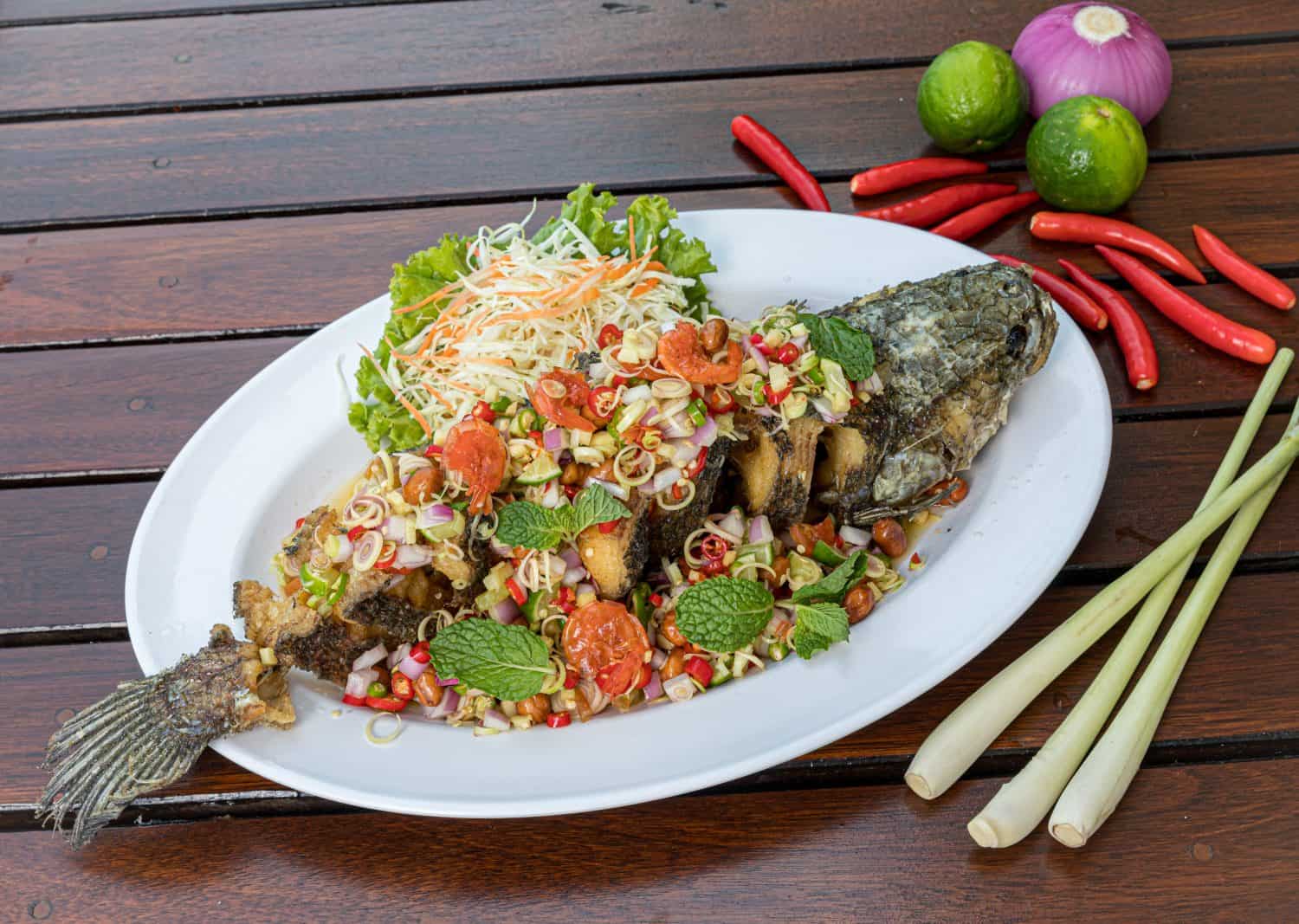
Another type of invasive fish that happens to be particularly tasty is the snakehead fish. This fish hails from Asia. It was likely imported as a pet and then released into the wild where rather than dying out, it thrived. These fish have voracious appetites and they’ll eat almost any fish they can fit in their mouth. What they don’t eat ends up getting crowded out of the area as the snakehead population eats through everything in sight. The state of Maryland has been battling a severe snakehead infestation for years. They have published specific and brutal guidelines for how to dispatch a snakehead if you catch one.
Snakeheads are unique fish because they’re one of the types of fish that can breathe air. Thus, if you catch one, you can’t just throw it in a bush and let it suffocate. It will eventually find its way back into the water where it will continue its reign of terror. The state of Maryland dictates that people who catch Snakeheads should deal with them by “decapitation, evisceration, cutting out its gut, or pulling out its gill arches.” They include handy guides on how to do these things.
The good news if you catch a snakehead is that not only can you eat them but they’re also delicious! People who have eaten snakehead describe it as being better than catfish or on par with cod and flounder. (This is the seafood to avoid at all costs.)
